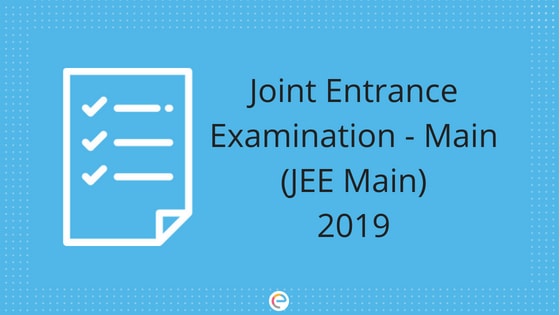The Joint Entrance Examination (JEE) is one of the important entrance examinations for gaining admission to top engineering colleges like the IITs, NITs, GFITs, etc. JEE Main is conducted for rendering admission to candidates in the undergraduate programs of B.E/B.Tech for engineering and B.Arch/ B.Plan of Architecture.

However, through the years, the JEE has gone through a number of changes from its pattern of paper and conduction of examination. Let’s gain an in-detail understanding of the significant changes in the papers over the years.
About JEE
JEE Main and Advanced were introduced in the year 2013 by the Union Human Resource Development Ministry. It was introduced replacing AIEEE and IIT JEE which were then an important entrance examination for engineering courses. JEE Main rendered a 50% weightage for the scores acquired in class 12th examination, in comparison to AIEEE and IIT JEE that solely concentrated on the scores acquired in the entrance.
Changes made:
In the case for NITs and other government-affiliated institutions, a 40% weightage was given to Class 12th scores, whereas 30% and 40% weightage to scores obtained in JEE Mains and JEE Advanced respectively. Candidates who sought admission to IITs were required to gain at least 50% score in Class 12th and JEE Mains based on which over 50,000 students were availed admission to the institute.
2014: JEE Main Counselling
A significant change was brought to the JEE Main counseling from the year 2014. The process is much easier and reduced the load and inconvenience for availing admissions. The process was upgraded to four rounds in comparison to three rounds of 2013.
This includes registration, choosing and locking your choices, mock seat allotment, document verification. After the fourth round of interview, the candidates are directly given admission. This change helped in reducing candidate’s pressure in attending the counseling and commencing their classes.
Setting up of counseling help centers
A further change was incorporated in the year 2014 by setting up Help and Reporting centers. This eased the counseling process for candidates who could aid assistance from these centers in case of queries. The centers were set up across different parts of the country.
2016 – Formation of JoSAA
In the year 2016, the HRD ministry incorporated the JoSAA or Joint Seat Allocation Authority for allocating seats for candidates in NITs and IITs across the country. The seat allocation process was taken over by JoSAA from the CBSE who conducted the process formally.
Why was JoSAA set up?
The council was set up by the ministry of HRD with the lieu of managing and regulating the joint seat allocation. Admissions were allocated in 97 institutes through JoSAA seat allocation at eminent IITs, NITs, and government institutions. Students could attempt this counseling online as well as the offline basis.
2017 – Scraped class 12th scores for AIR
The Ministry of HRD in the year 2017, brought about an important change with respect to calculating the All India Rank for JEE Main. As per the changes, the weightage of class 12th scores were completely scrapped for calculating AIR scores.
As per the older system, candidates who secured 75% and above in class 12th or were included in the top 20 percentile in class 12th along with a good percentile in JEE Main were deemed eligible for seeking admission to NITs, IITs, CFTIs. However, with the changes brought by HRD in 2017, the scores of the class 12th was given no weightage.
Mandating Aadhar Card for admission
Another change brought about in the year 2017 was with regards to mandating Aadhar Card for filling application forms. It was made a mandatory document in entire India except for Jammu & Kashmir. Candidates belonging to J&K could enter their bank account number, passport number, ration card number or any valid government identity number for filling the forms.
2018: Examination conducted by NTA
In the year 2018, the government introduced a separate agency named the National Testing Agency (NTA) who would be organizing the exam. It took over from CBSE who conducted the entrance examination till date.
Online mode of Examination
As per the changes brought about by NTA, the JEE Mains will be conducted in the online mode through the CBT process in comparison to offline mode. For acquainting candidates with the online mode of examination, the NTA also set up various Test Centres at various parts of the country. Students can register themselves at these centers and take the mock tests conducted in the same lines as that of the main examination.
Multiple sessions for examination
In comparison to the previous year, JEE Mains from the year 2019 will be conducted in multiple sessions in the year. Students can attempt the examination any number of times in a year. The scores which are higher will be calculated for the admission process.
No change in Syllabus
As contemplated, there were no changes brought to the syllabus of JEE. Though the JEE paper has gone through significant changes over the year the examination pattern and weightage remained the same. Each correct answer was provided 4 marks and wrong answers are given negative marking. However, no marks are deducted for questions left unattempted. The duration of the examination is 3 hours comprising of three subjects that are Physics, Chemistry and Mathematics.